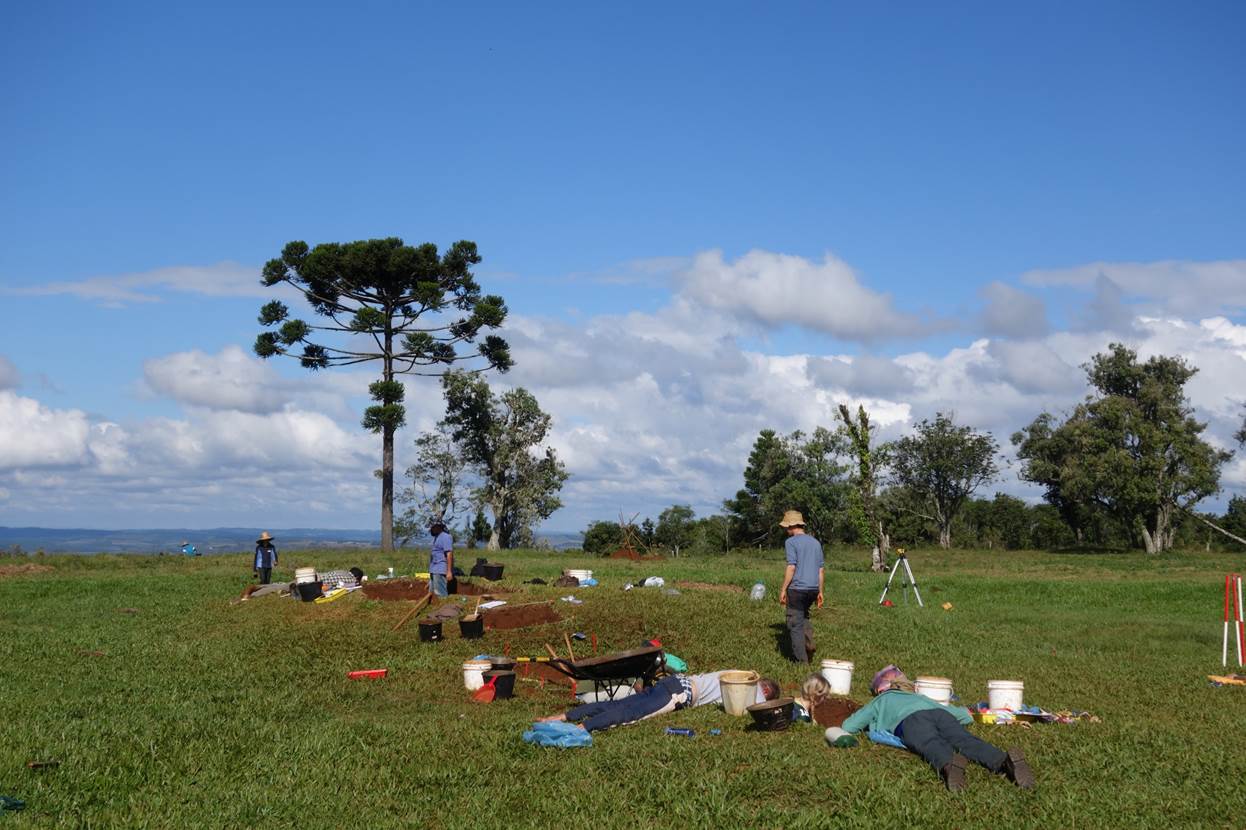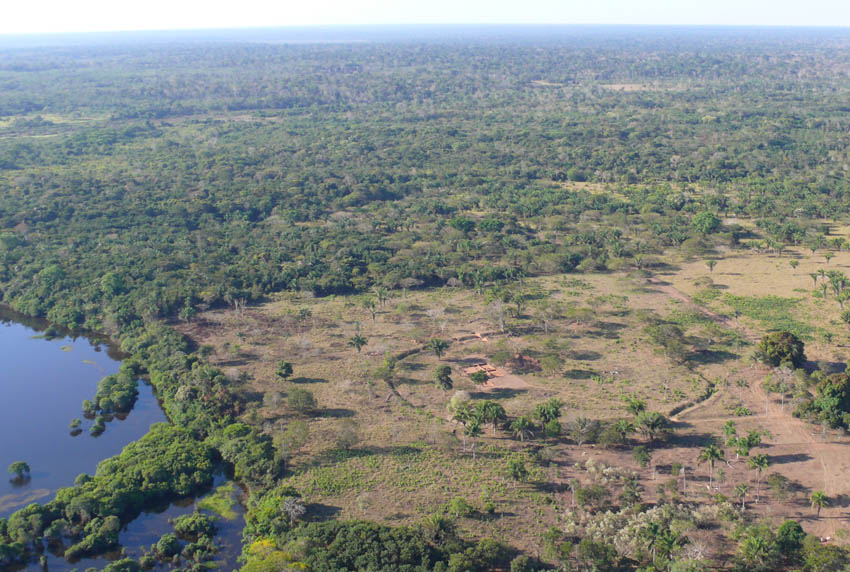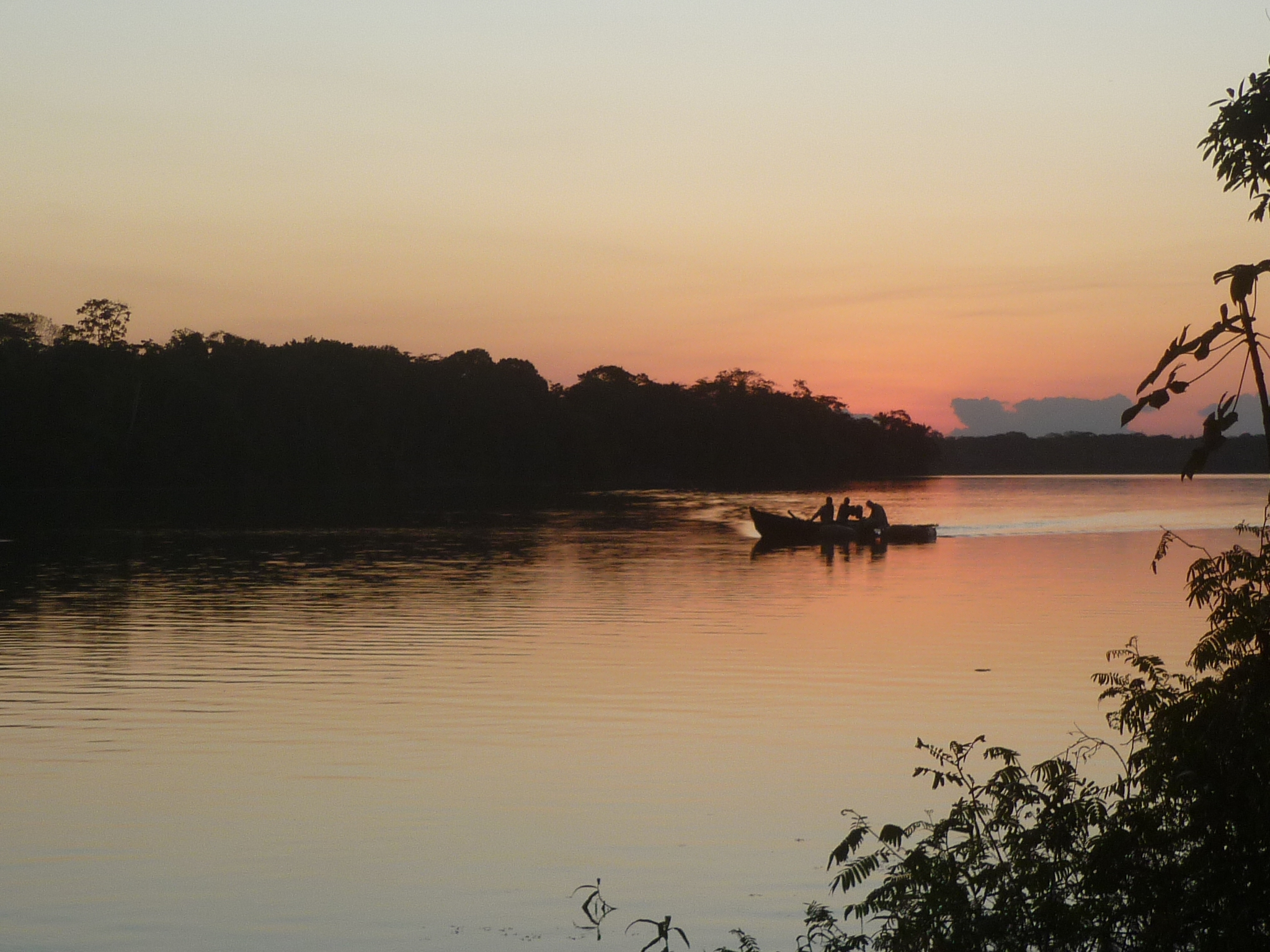Human-Environment Relationships in pre-Columbian Amazonia (HERCA)
Principal Investigators: Prof. Francis Mayle (University of Reading) and Prof. Eduardo Neves (University of São Paulo). Postdoctoral Research Associate (University of Reading): Dr Marco Raczka. Co-Investigators: Dr Carla Jaimes Betancourt (University of Bonn), Prof. Francisco Cruz (University of São Paulo), Dr Gundula Müldner (University of Reading), Prof. Paulo de Oliveira (University of São Paulo), Prof. Christopher Ramsey (University of Oxford), Prof. Heinz Veit (University of Bern), Dr Ximena Villagran (University of São Paulo).
The dynamics of past human-environment relationships is one of the most relevant issues in archaeology today. Pre-Columbian (pre-1492) Amazonia provides a case study of a long-standing debate into human-environment interactions. At one end of the spectrum are those who view Amazonia as a largely pristine wilderness which has shaped human history, while at the other are those who argue that Amazonia has been utterly transformed into a domesticated landscape by millennia of human land use. Recent ground-breaking discoveries of vast, pre-Columbian landscape engineering projects – monumental habitation mounds, ring ditches, causeways and canals – overturn the paradigm that environmental constraints limited cultural development in Amazonia to simple semi-nomadic, hunter-gatherer lifestyles, as practiced by indigenous peoples today. However, the processes by which these complex (stratified) societies emerged and declined, and their relationships with the environment, remain unresolved.
This uncertainty stems from a paucity of archaeological data and a lack of the inter-disciplinary collaboration essential for investigation of human-environment interactions. This project therefore assembles an international, multi-disciplinary research team to integrate archaeological and environmental approaches and data to address our overarching research aim: to determine the relationships between the emergence and demise of stratified societies, food procurement strategies, and environmental conditions in Pre-Columbian Amazonia.
We focus on three study areas in SW Amazonia which provide a unique opportunity to examine the emergence and demise of different societies across a broad spectrum of environmental conditions – in terms of forest cover, soil quality, and flood/drought risk.
The following techniques will be employed:
- Archaeological excavations will reveal human occupation histories spanning over 8,000 years, while laboratory-based analyses of pottery, human bones, and soils will provide insights into diet, food processing, cultural practices, and land use.
- Microscopic analyses of ancient charcoal, pollen, and plant remains from nearby lake/channel sediments and soils will reveal forest and savanna resource management; e.g. use of fire and selection of economically important species such as fruit trees and palms.
- The evolutionary history of the physical landscape and river networks will be reconstructed to determine how changes in flood regime influenced occupation history and land use.
- The above data will be compared with annual-resolution climate records from nearby cave stalagmites to determine potential linkages between cultural/land-use change and climate change.
- To integrate these different lines of evidence, and understand their relationships through time, it is essential to have secure chronologies, which we will achieve predominantly through radiocarbon dating.
Jê Landscapes of Southern Brazil: ecology, history and power in a transitional landscape during the late Holocene

Archaeological excavation at Abreu Garcia site, Santa Catarina state, Brazil. Courtesy of Prof Frank Mayle
Investigators: Dr. Macarena Cardenas (AHRC and FAPESP funded PDRA)
Prof. Francis Mayle (University of Reading), Prof. José Iriarte (University of Exeter), Rafael Corteletti (Universidade Federal do Paraná). PhD student: Oliver Wilson (funded by University of Reading, School of Archaeology, Geography and Environmental Science).
The project aims to identify and understand the distribution in both time and space of the Jê group, a pre-Columbian (pre-1492 AD) culture that seems to have been more than just dispersed, independent communities. Je land use may have had a major impact on the vegetation of the southern Atlantic Forest, one of the world’s biodiversity hotspots.
Archaeological records show that the Jê people appeared about 2000 years ago, and that they were abundant, organized, inhabited a wide geographical area of southern Brazil, and created built landscapes by constructing burial monuments and sacred places. Around this time fossil pollen data demonstrate that there was a major expansion of Araucaria forest, raising the possibility that the Jê people, rather than climate, were responsible for this biome shift.
The palaeoecological team in this project (Dr Macarena Cárdenas and Professor Frank Mayle) will investigate sedimentary records from bogs, in close proximity to arch sites, along an altitudinal transect spanning Restinga (coastal vegetation), tropical Atlantic forest, Araucaria forest, and Campos (grassland). Through analysis of fossil pollen, phytoliths, charcoal and geochemical data, they aim to determine the relationship between human land use (e.g. burning and agriculture), climate change and vegetation dynamics.
More information about this project can be found on the project’s webpage.
Amazonia under mid-Holocene drought
PhD students: Heather Plumpton (funded by University of Reading, School of Archaeology, Geography and Environmental Science), Richard Smith (funded by NERC Scenario Doctoral Training Partnership).
The overall aim of this project is to improve understanding of the long-term impact of drought upon Amazonian forests. This will be done by comparing the geographic distribution and floristic composition of southern Amazonian transitional forests under today’s humid climate versus the significantly drier climate of the mid Holocene (ca. 6,000 years ago, 6 ka BP).
A number of palaeoecological proxies will be used to reconstruct vegetation responses to drought, including fossilised pollen and phytoliths from lake sediment cores and soil pits. These palaeoecological data will enable us to produce maps of vegetation 6 ka BP, and compare these to maps of present day vegetation, in order to quantify the geographic scale of ecotonal shift. We will also investigate the dynamics of vegetation response to drought over thousands of years and ask ecological questions such as: What are the rates of floristic change in response to drought? Can we identify precipitation thresholds beyond which floristic turnover gives way to biome (forest to savannah) turnover?
Knowledge of the geographic distribution and composition of Amazonia’s transitional forests under the mid-Holocene’s drier climate can provide important insights into the scale of forest die-back that is predicted under future enhanced drought, as simulated by several climate models. While many Earth System models predict increased forest die-back in the future, huge uncertainty exists over the geographic extent of this die-back. This uncertainty has implications in understanding what the consequences of climate change might be for Amazonian biodiversity, ecosystem services and functioning.
To try and reduce this uncertainty, the palaeoecological reconstruction of southern Amazonian transitional forests will be used as a validation tool for a suite of Earth System models (utilising the PMIP3/CMIP5 databases). By looking at which models perform well in reconstructing mid-Holocene forest die-back, we can better determine which models are best for simulating future ecosystem responses.
Human-environment interactions of the pre-Columbian ring-ditch cultures in south-west Amazonia
Investigators: Dr. John Carson (University of Reading funded PDRA)
Prof. Francis Mayle (University of Reading)
What was Amazonia like before the arrival of Europeans in the New World in AD 1492? Traditionally pre-Columbian Amazonia has been described as a sparsely populated “pristine wilderness”. The discovery of numerous archaeological sites now suggests that some regions were inhabited by large, sedentary and socially-complex pre-Columbian societies. These people built extensive earthworks and altered the hydrology, soil conditions and flora of the landscape around them.
There remains strong disagreement however over the spatial and temporal scale of pre-Columbian human impact in Amazonia and its legacy in the modern environment. While some argue that significant impacts were limited to certain more productive parts of the basin (e.g. along the main Amazon river), others advocate a widespread influence throughout the basin, perhaps stretching back through the whole Holocene (ca. last 12,000 years). Resolving this debate has significant implications for our understanding of rainforest resilience/sensitivity to human impact and the role of humans in shaping the structure of the Amazon rainforest over time.
This project aims to address these large-scale questions by reconstructing palaeoenvironmental change around pre-Columbian ring-ditch sites in the Beni Department, Bolivia, and Acre State, Brazil. Sediment cores taken from lakes located close to the archaeological sites are being analysed for fossil pollen, phytoliths, macroscopic charcoal and geochemistry. From these proxies we can detect activities such as forest clearance, anthropogenic burning and crop cultivation (e.g. maize, manioc, squash, sweet potato). By integrating these palaeo data with existing archaeological records, we will get a picture of the palaeoenvironmental context of human occupation on these sites and gain insights into the scale and types of land use practised by ring-ditch building societies.
Key collaborators in this project are José Iriarte (University of Exeter), Bronwen Whitney (Northumbria University), Denise Schaan (Universidade Federal do Pará, Brazil) and J. Daniel Soto and other colleagues at the Noel Kempff Mercado Museum of Natural History in Santa Cruz, Bolivia.
Origin of biodiversity in the Central Atlantic Forest of Brazil
Investigators: Prof. Frank Mayle (University of Reading), Prof. Luiz Pessenda (CENA/University of Sao Paulo, Brazil)
Brazil’s Atlantic Forest (Mata Atlantica) is one of the most biologically important ecosystems on Earth, due to its remarkably high levels of biodiversity and endemism (species unique to that region). Nearly 50% of all its animal and plant species are endemic. Unfortunately, it is also one of the most threatened tropical biomes on the planet, with less than 10% of its original forest extent remaining, due to heavy deforestation since earliest colonial times. Because of both its high endemicity and critically endangered status, the Atlantic Forest has consequently been classified by conservationists as one of the eight most important ‘biodiversity hotspots’ in the world. However, despite its global importance, the origin of its biodiversity remains poorly understood and is the topic of considerable debate and controversy.
In order to better predict how the biodiversity of these forests is likely to be affected by continued fragmentation, fire, and future climate change, improved understanding is needed of the origin of their biodiversity and their sensitivity (or resilience) to major disturbance in the past – both natural (e.g. climate change) and anthropogenic (e.g. fragmentation and fire) – over millennial to glacial-interglacial time scales.
Frank Mayle is therefore spending a month per year (2014-17) in Brazil, collaborating with Prof. Luiz Pessenda and several of his PhD students and postdocs at CENA/University of Sao Paulo – Flavio Lorente, Mariah Correia, Antonio Buso Jr. They are using a multi-proxy palaeoecological approach – based on sediment cores from lakes and bogs – to reconstruct the Late Quaternary vegetation and environmental history of the coastal Central Atlantic Forest, spanning northern Espirito Santo and southern Bahia states.
Frank is funded by the Brazilian CNPq ‘Science Without Borders’ Visiting Scientist programme.



